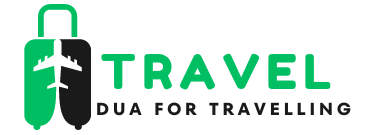If you’ve ever hired a local freelancer, visited a neighborhood bakery, or paid a lawn care service run by one person, you’ve interacted with examples of a sole proprietorship. This is the simplest and most common business structure, making it a popular choice for entrepreneurs starting small.
In this article, we’ll explain what a sole proprietorship is, share real-world examples, and help you understand whether it’s the right choice for your business.
What is a Sole Proprietorship?
A sole proprietorship is an unincorporated business owned and operated by one person.
Key features include:
- No legal separation between the owner and the business
- Full control over decisions and operations
- Simplified taxes, with business income reported on the owner’s personal tax return
Sole proprietorships are easy to start and have minimal legal requirements, making them ideal for low-risk, small-scale ventures.
Real-Life Examples of a Sole Proprietorship
Below are common types of sole proprietorship businesses you might encounter in everyday life.
Freelance Graphic Designer
A self-employed designer offering logo creation, branding, and marketing materials to clients without forming an LLC or corporation.
Local Bakery Owner
An individual who runs a neighborhood bakery under their own name or a trade name, managing everything from baking to customer service.
Independent Consultant
A marketing, business, or IT consultant who offers professional advice and services independently.
Lawn Care and Landscaping Service
One person provides lawn mowing, garden maintenance, and landscaping work in their local community.
Personal Trainer
A certified fitness professional training clients at home, outdoors, or in rented gym space without corporate registration.
Handyman Services
A skilled tradesperson offering repair and maintenance services under their own name.
Etsy or Craft Seller
An artisan selling handmade jewelry, art, or crafts online without forming a separate legal entity.
Photographer
A wedding, event, or portrait photographer working independently and billing clients directly.
Tutor or Educator
An individual offering academic tutoring or language lessons without being part of a larger company.
Food Vendor
A person selling homemade goods at farmers markets, fairs, or food stalls.
Industries Where Sole Proprietorships Thrive
- Creative Services – Writing, design, photography
- Food & Beverage – Catering, bakeries, small cafes
- Personal Care – Beauty, fitness, wellness
- Home Services – Cleaning, landscaping, repairs
- Online Retail – Handmade goods, digital products
Advantages of a Sole Proprietorship
- Easy to start – Minimal paperwork and low cost
- Full control – The owner makes all decisions
- Simple taxes – Income reported on a personal tax return
- Flexible operations – Easy to change business direction
Disadvantages of a Sole Proprietorship
- Unlimited personal liability – The owner is responsible for all debts
- Harder to raise capital – Limited financing options
- Less credibility – Some clients prefer working with incorporated entities
When to Choose a Sole Proprietorship
A sole proprietorship is best if:
- You’re starting a small, low-risk business
- You want to test an idea before incorporating
- You don’t need significant outside investment
- You value simplicity over complex legal structures
Conclusion
A sole proprietorship is the simplest path to starting a business. From local service providers to online sellers, many entrepreneurs choose this structure for its ease of setup, low cost, and flexibility. While it comes with unlimited liability, it’s a great starting point for small-scale ventures and side hustles.
By studying examples of a sole proprietorship, you can see how this business model works in real life—and decide if it’s right for your entrepreneurial journey.
FAQs
1. Is a freelancer considered a sole proprietor?
Yes, most freelancers operate as sole proprietors unless they register as an LLC or corporation.
2. Can a sole proprietor hire employees?
Yes. Even as a sole proprietor, you can hire employees and must comply with employment laws.
3. Do I need a business license for a sole proprietorship?
It depends on your location and industry. Many local governments require permits or licenses.
4. How do I pay taxes as a sole proprietor?
You report business income and expenses on Schedule C of your personal tax return.
5. Can I change from a sole proprietorship to an LLC later?
Yes. Many entrepreneurs start as sole proprietors and later register as an LLC for liability protection.
Also read: Business for Sale Long Island: Your Guide to Buying & Selling in 2025




Leave a Comment